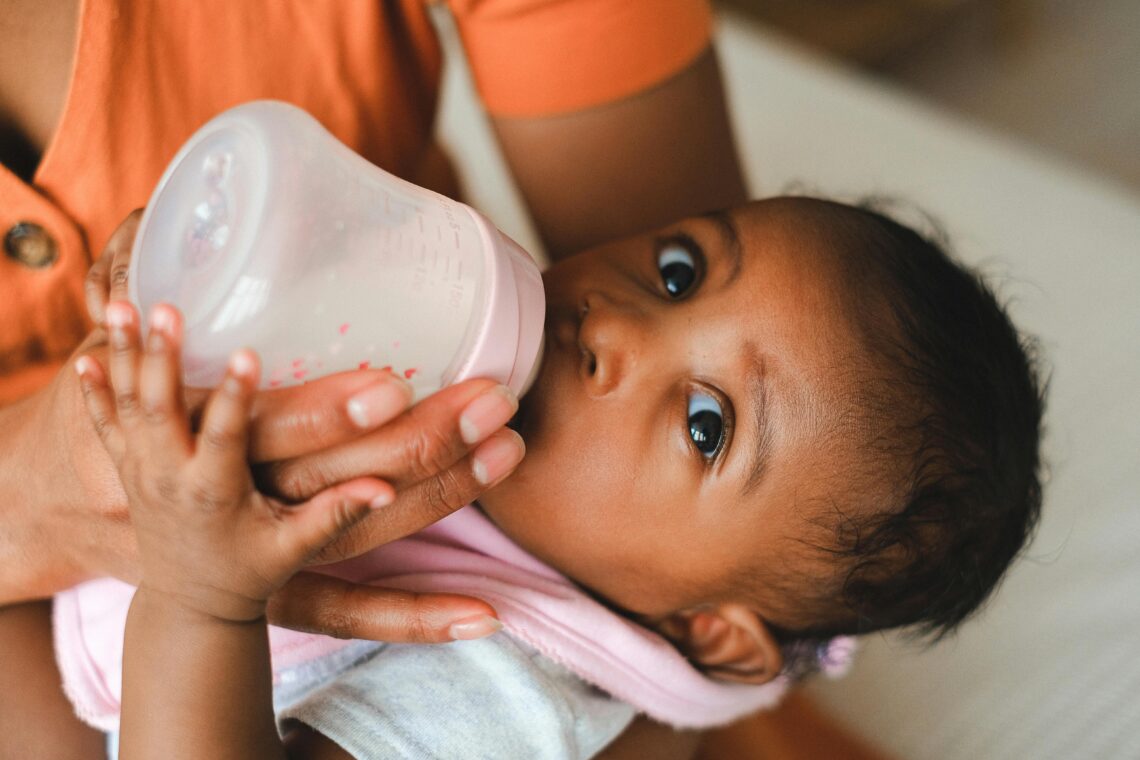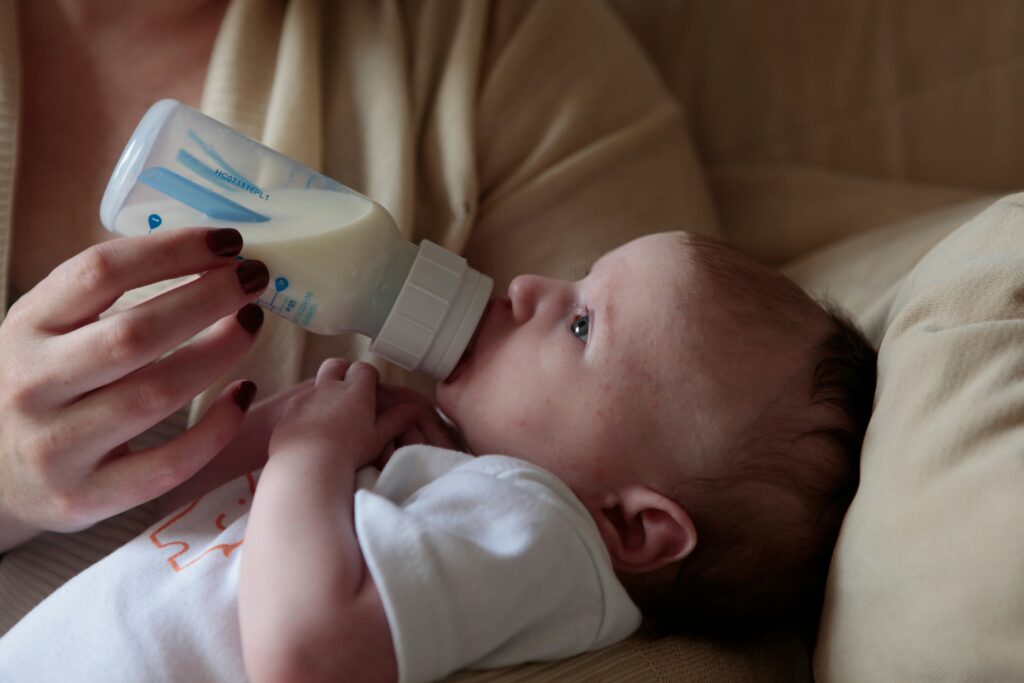
How to Express Breast Milk
Many mothers will receive advice on breastfeeding, but not how to express breast milk. Expressing breast milk can be incredibly useful.
Juggling breastfeeding with modern life can be difficult. Giving others the ability to feed the baby can take the pressure off the new mum.
For some, breastfeeding is too difficult or painful. Expressing may be the only way to offer breastmilk to their baby.
How to express breast milk
There are three main ways to express breast milk. These are by hand, by manual pump and by electric pump.
Expressing by Hand
Expressing by hand has two main benefits. Firstly, you are not dependent on electricity, so you will have more flexibility about where you pump. Secondly, it is a lot quieter so if you have people in the rooms surrounding you it may feel more comfortable and private.
The downside to hand expressing is that it takes longer, and isn’t as effective at stimulating milk supply as an electric pump.
If you are just trying to remove excess milk, or get your milk flow moving to help your baby to breastfeed then hand expressing can be effective. If you are trying to exclusively express, I would recommend using a pump.
Expressing using a manual pump
Most manual breast pumps are simple to use. They have a handle that you squeeze and release to pump. They are also usually lightweight and quiet, which can be beneficial for pumping out and about. Unfortunately, they are still not as efficient as an electric pump. Again, if you are exclusively expressing, you may want to invest in an electric pump.
Expressing using an electric pump
Electric pumps are noisy, and sometimes, mains-operated meaning you have to sit near a plug to pump. However, they often manage to pump more milk in less time. Some brands are designed to mimic a baby’s suckling in pressure and rhythm. This can help stimulate milk production which will be beneficial in the long term.
As your baby begins to grow they will need more milk. If you are trying to keep up with the increasing demand exclusively by expressing breast milk, how long it takes you to pump can become an issue. An electric pump may reduce this time, and leave you more time to enjoy being with your little one.
How to store breast milk?
You don’t have to use your milk immediately. It can last a little while if stored correctly.
If you are storing your breast milk, you must keep it in a sterile environment. This might be a container that you have sterilised or a milk storage bag. It is important to label your milk, so you know when it was pumped.
In the fridge
The amount of time that you can store breast milk in the fridge will depend on the fridge’s temperature. Here is a guide to checking the temperature of your fridge.
According to the NHS, if your fridge is under 4C you can use it to store breast milk for eight days. If your fridge is over 4C that shortens to three days.
In the freezer
If you have excess breast milk, you can also store it in the freezer. Frozen breast milk is good for up to six months.
You can defrost breast milk overnight in the fridge when you are ready to use. It should defrost in about twelve hours. If you need it a little faster, place it in a bowl of warm water for 20 minutes, or ten minutes under running warm water. If you are using warm water to defrost breast milk, be sure that your container is properly sealed first.
Once it is defrosted the milk can be stored for 24 hours in the fridge.
Out and about
It is true, that breastfeeding is the most convenient method of feeding for when you are out and about. However, with a little pre-planning, you can feed your little one expressed milk on the go, without too much hassle.
Before you take your breast milk out with you, fully chill it in a fridge. You can then store it in a cool bag filled with ice bags for up to 24 hours.
We will look at expressing on the go in more detail further down.

How to exclusively express breast milk for baby
Exclusively expressing breast milk for your little one is doable. Not easy, but doable. If breastfeeding is not possible, but you want to give your little one the benefits of breast milk this may be an option that you want to consider.
I exclusively breast fed for about two weeks. My friend managed for six months, which I think is heroic. Though it is hard, there are ways to make it manageable and find a life away from the pump. Here are a few things I learnt along the way, which I hope will help.
What do you need to get started?
Before you begin, these are the things that are worth investing in if you want to exclusively pump.
- Breast Pump– I would recommend using an electric pump. Medela is always a great brand, as is Philips.
- Steriliser- Sure, you can sterilise a bottle in boiling water, a sterilising machine is a game changer, as you will be pumping and feeding multiple times a day.
- Milk bags and storage containers- The amount your little one feeds will fluctuate from day to day. It is always a good idea to try and accumulate a back up supply. This should be properly stored (see above) and labelled.
- Cool bag and ice packs– Choose something small and portable. I actually used a thermal lunch bag rather than a cool bag, as it fitted in my nappy bag.
- Bottles- You will want at least 6 bottles so that you can sterilise between feeds.
- Notebook and pen- This is to track how much you are feeding and how much baby is drinking.
Some great options for electric pumps
How often to pump?
Your body makes breast milk on demand, so the more that you pump, the more your body will produce. This means that to establish a strong supply, you need to pump at least 8 times a day, though twelve would be ideal.
You should aim to pump at least once between 2am and 5am. This is because the prolactin hormones which facilitate milk production are higher at night.
Mimicking cluster feeding
Cluster feeding is a baby’s way of telling our body that there is not enough milk. They will feed till the milk is down to just a trickle, then come off and go on again a few minutes after. They repeat this pattern for a few hours and our body’s will register that there more milk is needed.
You can mimic this to increase milk production using a method called power pumping.
Power pumping is when you alternate pumping with resting over an hour or two. You can begin with your first pump till your milk has slowed down and you are just getting drips. Stop pumping, and rest for ten minutes. Pump again for ten minutes, then move to five minutes pumping and five minutes resting.
How to juggle pumping and a newborn
The amount of time that you spend pumping can feel overwhelming. Especially when you have a newborn to look after too.
When you are pumping you may find that your baby wants to feed. If you can manage pumping and feeding at the same, that is wonderful, but it is not easy.
Wearable pumps have come along way, but are expensive and not always a perfect solution. You have to be careful not to bend over whilst you are wearing them.
At the end of the day, juggling pumping and childcare is not easy, so be kind to yourself and accept any help that other people may offer.
Pumping out and about
It is possible to express on the go. The increase in the amount of nursing rooms in town centres is a real asset.
If you are visiting friends, it is worth asking ahead if there is somewhere that you can pump for a few minutes. This will give them the chance to clear an area for you if needed.
Milk will keep in a bag with ice blocks for up to 24 hours. Use sterilised bottles to store the milk in your cool bag so it is ready when you need it. It is worth packing a spare sterile teat as a back up.
If you are out long enough to have to pump, and feed more than once, use the pumped milk first. The milk from the fridge will keep for longer as it was chilled when it was put into the cool bag. It is worth having a marker in the bag so that you can label which is fresh milk and which is chilled.
Tracking feeds
With the exhausting blur of new parenthood, it can be difficult to gauge how much baby is drinking and how much you are pumping in comparison. This is something you really need to know. If baby is drinking more milk than you are pumping, acting early to try and increase milk supply can help you stay ahead.
A simple method for this is to use a notebook. Every day log every pump or feed, along with the time and how much baby drank or you pumped. At the end of the day add up the total off each.
Whilst tracking feeds, keep an eye out for patterns. If there is a particular time of day where you are getting less milk, you may want to try power pumping during those hours to increase supply
A final note
Expressing is not easy. Remember that it will not be forever, and hang in there.
I wish you all the peace,
Hannah Louise











